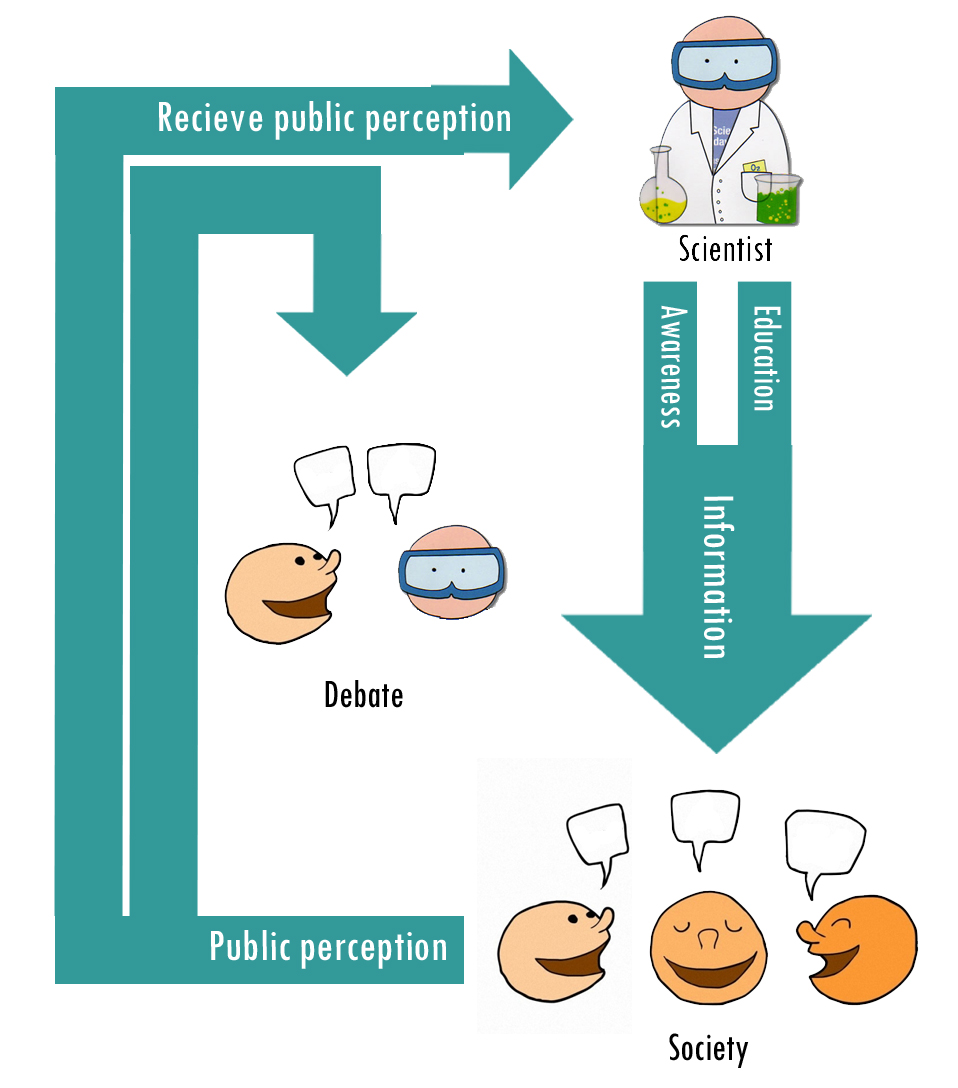Team:TU Delft/EPAC
From 2010.igem.org
Contents |
The EPAC Pyramid
Introduction
When new technologies are presented to society, responses of the public are hard to predict. In the case of synthetic biology numerous questions rise about safety, security and ethics. Also issues like patenting in contrast to open-source models are a topic of debate. During our iGEM project we tried to analyze, assess and improve the relationship between society and synthetic biology. With our new approach, our team hopes to improve the way in which synthetic biology meets the expectations and needs of society. For our Human Practice project we got inspired by a 2-year European Project called SYNBIOSAFE (1). The paper that resulted from this project was based on an extensive literature search, interviews with scientists, social scientists, civil societies (2), a 4 week long public e-forum (3), and consultation with several stakeholders (1). In a reflection of the outcome of SYNBIOSAFE, the following societal topics were highlighted: safety, security, ethics and the boundary between science and society.
Looking at these topics we came up with a holistic approach for our human practice in order to reach all stakeholders and stimulate engagement in the continuous dialogue in the field of synthetic biology.
Perceptions from different parties on safety, security and ethics were observer to get a clear picture of the opinions that are present among general public as well as experts. Opinions can be very different when there is a difference in knowledge. Based on multi-stakeholder perceptions one can start looking for ways to provide information. To disseminate information on two levels. In the first place you can make people aware of synthetic biology. One step further, one can use an educational program. Communication at the interface between science and society makes it important to choose a combination between receiving information and disseminating information. That way we can make the following combinations: education, perception & awareness, perception
This is how the EPAC pyramid came to existence. With this model we imply various ways to equip society with the right information to make sure that one is able to form a proper perception that has value in the ongoing discussion.
The EPAC Pyramid - a new approach to Human Practice
When new technologies are presented to society, the reaction of the public is hard to predict. In the case of synthetic biology numerous questions raises about biosafety and biosecurity. Also issues like pattenting in contrast to open-source models are a topic of debate.
During our iGEM project we tried to analyze, assess and improve the relationship between society and synthetic biology. By doing so, our team hopes to improve the way in which synthetic biology meets the expectations and needs of society.
To accomplish this goal we chose an holistic approach to Human Practice. Our approach implies various ways to equip sociaty with the right information in order to make sure that one is able to form a proper opinion. This way one can contribute to the public debate.

To grasp the muliple aspects of this holistic approach, we come up with a model that provides us the right guide lines to organize our human practise activities - The EPAC Pyramid was created.
References
- Ganguli-Mitra, A., M. Schmidt, et al. (2009). Of Newtons and heretics. Nat Biotechnol 27(4): 321-322.
- Schmidt, M., A. Ganguli-Mitra, et al. (2009). A priority paper for the societal and ethical aspects of synthetic biology. Syst Synth Biol 3(1-4): 3-7.
- Schmidt, M., H. Torgersen, et al. (2008). SYNBIOSAFE e-conference: online community discussion on the societal aspects of synthetic biology. Syst Synth Biol 2(1-2): 7-17.
 "
"
